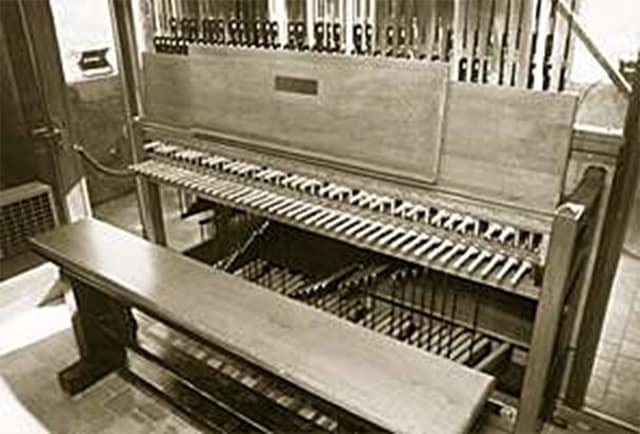
The palace and convent at Mafra, the city I live in, was recognized as a UNESCO World Heritage Site this year. This was probably the biggest news of the year for the city.
I’d like to tell you a little bit about the Mafra palace and convent.
It’s a stately building that rises over the town and a classic example of Portuguese Baroque architecture. It was built by King João V in 1717 to celebrate the birth of his daughter. He built a basilica and convent in addition to the palace.
The king ordered that it be constructed in the likeness of the Monasterio del Escorial in Spain and St. Peter's Basilica in Italy, but because the project was so massive, he was worried that it would never be completed—so he apparently brought 45,000 people on board at one point to construct a building that would ultimately have 5,200 doors, 2,500 windows, 29 courtyards and 880 rooms.

One of the key features of the palace is that it is 250 meters from the king’s bedchamber at one end to the queen’s bedchamber at the other. Just the distance itself is amazing, but it’s even more interesting that the married couple slept at opposite ends.
Another interesting feature is the library, which is 83 meters long.
I think I mentioned something about this before, but this library is one of the most beautiful in Europe and was declared the most important convent and royal library in Portugal in the 18th century to preserve it.
Arrabida monks wrote down the titles of every one of some 40,000 works collected through 1819 and created a catalogue which still exists today. This priceless collection has works that date as far back as the 16th century, and some of the rarest are 22 incunabla and fourteen maps from other countries.
Apparently there are bats in the library that come out at night and eat the bugs that damage the books.
Right in the center of the structure is the entrance to the basilica. It’s made largely from pink and gray marble mined in Sintra.
The most well-known thing about the basilica are its six pipe organs. Six organs is a lot compared to other countries, but not unheard of. It’s not like you can’t find a cathedral or church that actually has six or more. But they tended to increase in number as time went on, so what’s really unique is that the Mafra palace and convent installed six at the same time right from the beginning. What that means is that there are still classical pieces and musical scores that call for the playing of six organs simultaneously.
Another thing that’s rare in the world are the two towers with 57 bells each, for a total of 114. It is said that their sound could be heard from 24 kilometers away, but given their current condition they can’t be rung that intensely anymore. They’re not even used to ring out the time anymore.

(I’m not sure exactly when, but they did keep time in the old days. The red arrow shows an oil drum-type object where the clock hand came out; this turned and played the bells. It was a little like a music box.)

(The red arrow shows the clock)


(This is the timekeeping part, though it is not visible from the outside. It has a beautiful design. The photo on the right shows the weights that ran the clock. They even move toward the bottom of the tower.)
The wood that supports the bells is also rotting, and is one of the seven structures that has been flagged (in Europe) as requiring immediate attention.
About three years ago, I went through the two towers with my husband to research the structure of the bells. The repair work is finally underway today, so I’m hoping that the clock and the bells will be usable again someday. I doubt if they’ll ever be restored to the way they were when they were built, but I’d really love it if the bells could ring out again and keep time for the city of Mafra, especially now that the structure is now a World Heritage Site.

(The wires are incredible outside the tower as well!)


(The bells are located inside the towers and are played with a device like the one shown above.)






























































